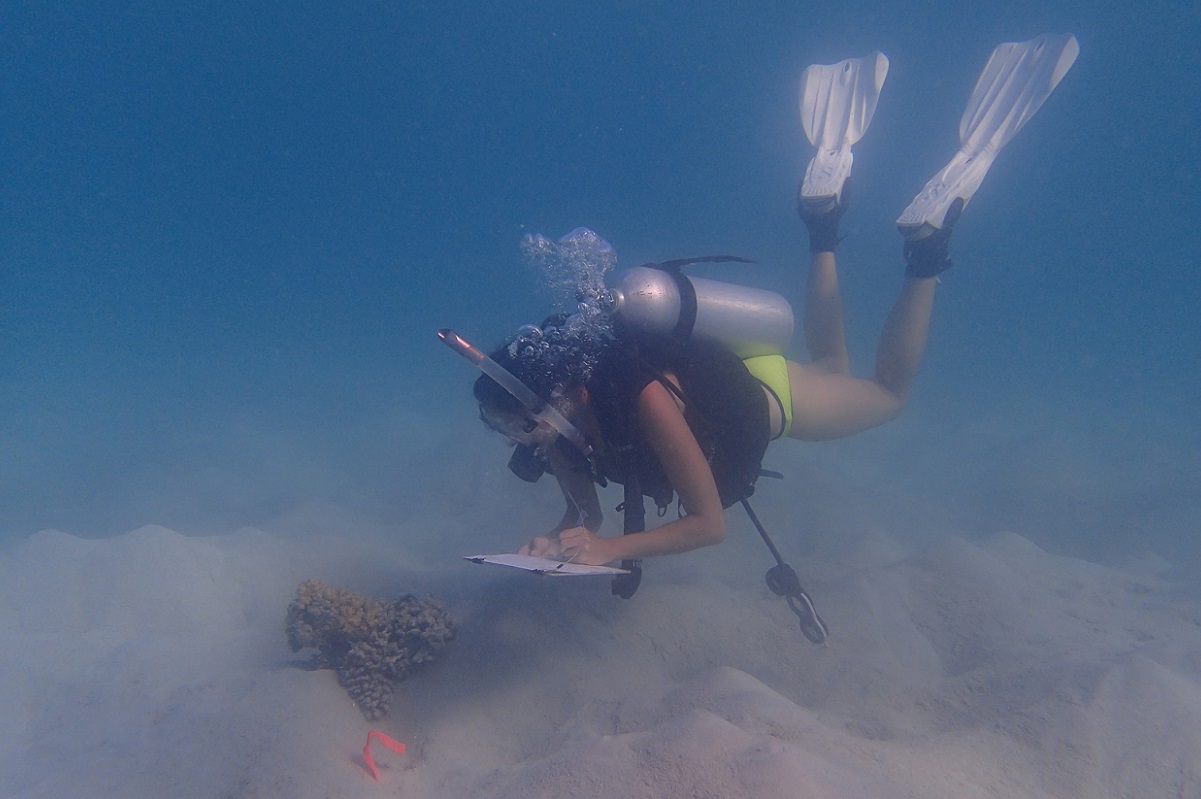
Recipient of a recent Impact Seed Funding grant, early career researcher Dr Emily Fobert is in the depths of a growing field of research illuminating how artificial light is affecting our ocean communities.
What made you decide to work in the research field?
I grew up in a landlocked city in Canada, so my fascination for the ocean came later than most marine biologists/ecologists.
In my last year of an undergraduate journalism program, I took science courses as electives because I wanted to be a science writer, and a friend convinced me to sign up with her for a tropical ecology field course in Cuba. My friend was a SCUBA diver, so I got my open water SCUBA certification to partner with her for a diving research project studying coral recovery. That course changed my life. I fell in love with diving and the underwater world, and I enrolled in a biology degree as soon as I returned to Canada.
What is your current research about?
We’re trying to understand how artificial light at night, or light pollution, can impact the marine environment.
Nearly every organism on the planet has evolved in very stable day-night, light-dark cycles, and many important biological processes, such as migration, reproduction and sleep, are highly attuned to these natural light rhythms.
Electric artificial lights have transformed the night-time environment over the past century, and this can have huge impacts on animals that can’t avoid light polluted areas. This is a recent field of ecology, so my research is focused on understanding the impacts on behaviour and physiology of individual coral reef fish, and then how light pollution can shape whole reef communities.
How will your work benefit the wider community?
Understanding the impact of light pollution will help urban planners, local councils and governments better design and manage coastal environments, and protect key habitats where light pollution can interfere with at risk species.
I think my research helps bring the idea of light as a pollutant into public discussion, which is important because exposure to artificial light at night has been found to have negative impacts on our health as well.
What has been your most challenging moment as a researcher?
I study the effect of light at night, so on a six-week field trip to Moorea in French Polynesia, we often had to work until 5am doing snorkel surveys, collecting fish samples and running lab experiments. We didn’t want to waste precious field time, so we also did field work from 8am most days. My sleep schedule mainly consisted of hour-long naps whenever I could fit one in.
When I returned home, I spent a month in bed recovering from the sleep deprivation – which was ironic because I was essentially studying the effects of sleep deprivation on fish. The worst part was no one believed me that the trip was a challenge – you say you were in French Polynesia and everyone thinks it was a holiday.
What does a normal day look like for you?
I sit at my computer analysing data, writing papers or grant applications to fund future research, and helping students with their projects.
When I have an experiment running, I’ll add feeding clownfish and executing behaviour or physiology tests in the lab. And when I’m in the field, I’m diving or snorkelling in beautiful tropical locations, watching fish and recording data – and these are obviously the best days.

